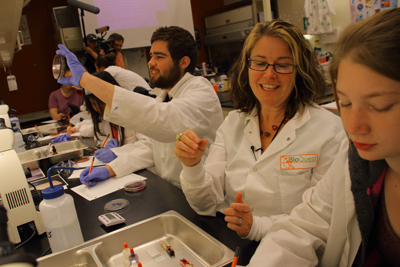Evidence-Based Practices

DO-IT applies evidence-based practices and collects outcome metrics that suggest that its efforts increase the success of students with disabilities in academic programs, degree attainment, and careers, particularly in challenging fields such as science, technology, engineering, and mathematics (STEM). Content and references within the content to which this page links present the base of research and practice that support DO-IT practices and the evidence that documents its success.
Selection of Evidence-Based Practices
Four primary sources of evidence are consulted when selecting practices to employ in DO-IT projects and programs: literature review, outcomes of prior projects hosted by DO-IT, suggestions from practitioners, and input from people with disabilities. Once appropriate evidence-based practices and promising interventions are identified, they are further developed to address specific characteristics of the DO-IT populations served by specific activities and the environments in which they are applied. They are formatively reviewed and modified for future implementation based on results.
Further details and references regarding sources that provide evidence that supports DO-IT's evidence-based practices and promising interventions are included in the web pages linked to the categories listed below.
Evidence of Success
DO-IT collects evaluation and research results regarding DO-IT interventions. They measure institutional change toward more inclusive educational environments as well as the success of participants in college and careers. Promising practices are shared through DO-IT's searchable online Knowledge Base. Some research results have been published in the literature. Many of these publications are linked to the three outcome areas listed below.